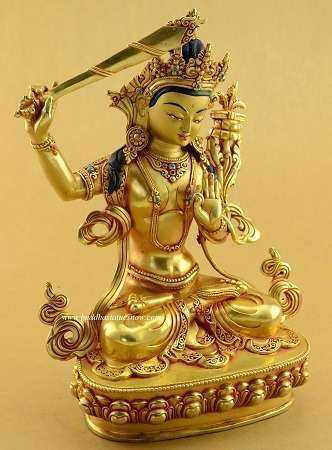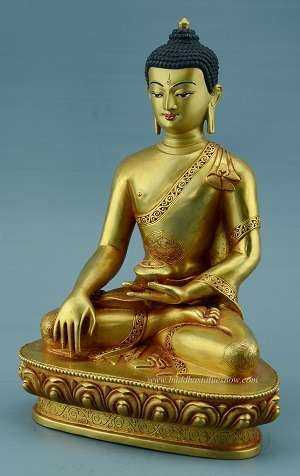This is an excellent question. Buddha statues produce miracles with underlying powers that are not immediately discernible by non-Buddhists. Indeed, devotees of the Buddha can draw inner strength from their Buddha statue. This is possible because Buddha statues have positive affects on followers which are deep sources of inspiration.
How do Buddha Statues Produce Miracles?
In Buddhism, miracles can come from within. This is because increasing your morality will produce karmic results which are beneficial and potentially miraculous. By instilling moral rectitude in your thoughts and actions, you will replace ignorance with wisdom and generate good karma.
In the Pali Canon, the basic definition of karma is cause and effect. Karmic law states that for every every action there is a reaction. Additionally, the voluntary nature of a person’s actions will make the karmic result either positive or negative.
Fundamental understanding of virtue and its incorporation into your daily routine will bear fruit in all aspects of a person’s life. In order to accomplish this one must instill virtue into their “mental body and consciousness”. As a result, your thoughts and actions will change little by little. This is not so easy. However, visual stimulants such as Buddha statues help you stay on the right path.

The Benefits of Faith and Proficiency
The Pali term for faith is “saddha” and the opposite of faith is doubt or “vicikiccha”. Additionally, the Pali Canon includes faith as one of the “beautiful mental factors”. The characteristic of faith is trust and its function is to clarify.
Indeed, faith is like a water clearing gem which causes muddy water to become clear. As a result, strong faith has the effect of removing the mind’s impurities. By eliminating doubt, a person can do amazing things which may previously have seemed impossible.
As a result of strong faith, devotees will also strengthen proficiency. The function of proficiency is to eliminate the unhealthy consciousness and mental body caused by “lack of faith”. This results in the “absence of disability” which produces a healthy and optimally functioning mind.
Having a healthy mind will bear other fruits such as mental tranquility, neutrality and malleability which are also beautiful mental factors. A healthy mind will benefit all aspects of a person’s life, not only spiritual realization. Indeed, Buddha statues produce miracles by strengthening faith and proficiency.
Faith in the “Triple Gem”
The Buddha taught all Buddhists to have unshakable faith in the “Triple Gem”. The three elements of the Triple Gem are Shakyamuni Buddha, the Sangha and the Dhamma. In other words, the Triple Gem consists of the Buddha of our time (Shakyamuni), the worldwide community of Buddhists including both monastics and lay Buddhists (Sangha) and the teachings of the original Buddha (Dhamma).
It is a terrible sin or defilement to have doubt in the Triple Gem. Indeed, lack of faith results in moral fearlessness and it is a form of ignorance. Ignorance is the foundation of all defilements and they will proliferate without faith. Therefore, one must have faith in the Triple Gem.

The instillation and practice of virtue has many benefits. The Buddhist law of cause and effect explains that the benefits you obtain are a result of your own actions. As a result of virtuous actions, others will also benefit by coming into contact with you.
Shakyamuni Buddha Statues Produce Miracles
The ultimate accomplishment of Shakyamuni Buddha is an example of unshakeable faith. The faith of the Buddha was unshakable throughout his life. For example, he renounced his kingdom and went to live in the forest as a renunciant when he was 29 years old. As a renunciant he endeavored to end the suffering of all beings. As a result, he lived in extreme destitution and endured many hardships.
Shakyamuni Buddha performed the Bhumisparsha mudra as he was on the verge of enlightenment. The Buddha preformed this gesture as he permanently vanquished his personal demons (also known as “Mara”). Certainly, the achievements of Shakyamuni Buddha were the ultimate victory for faith and the proliferation of virtue for sentient life.
Source:
The Comprehensive Manual of Abhidhamma
The Abhidhammattha Sangaha Pali Text, Translation & Explanatory Guide
General Editor Bhikkhu Bhodi

